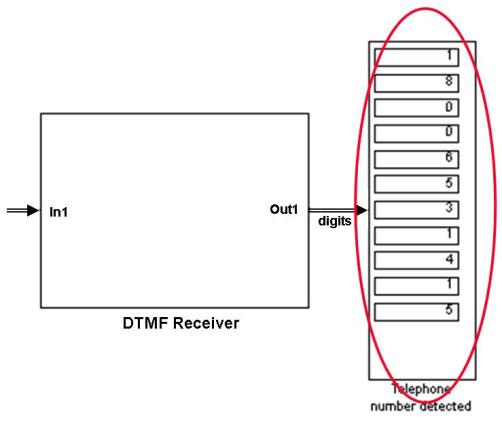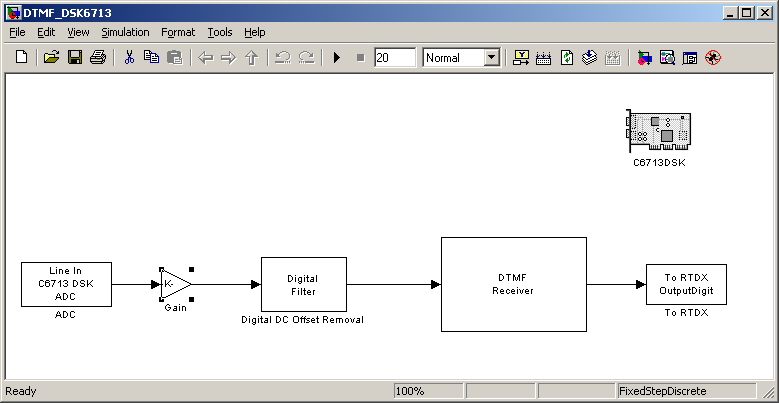| << Chapter < Page | Chapter >> Page > |

The real-time implementation environment is shown in Figure 7. The DTMF generation will be performed in MATLAB® and sent to the DSK through the PC sound card. The detected digits will be reported through RTDX. A graphic user interface (GUI) will be built to activate the transmitter, and display the reported digits.

The DTMF receiver will be based on the DTMF receiver from the simulation model, with the following changes:










The GUI will perform the following functions:
The desired GUI is shown in Figure 18

It will enable the user to:

Notification Switch
Would you like to follow the 'From matlab and simulink to real-time with ti dsp's' conversation and receive update notifications?